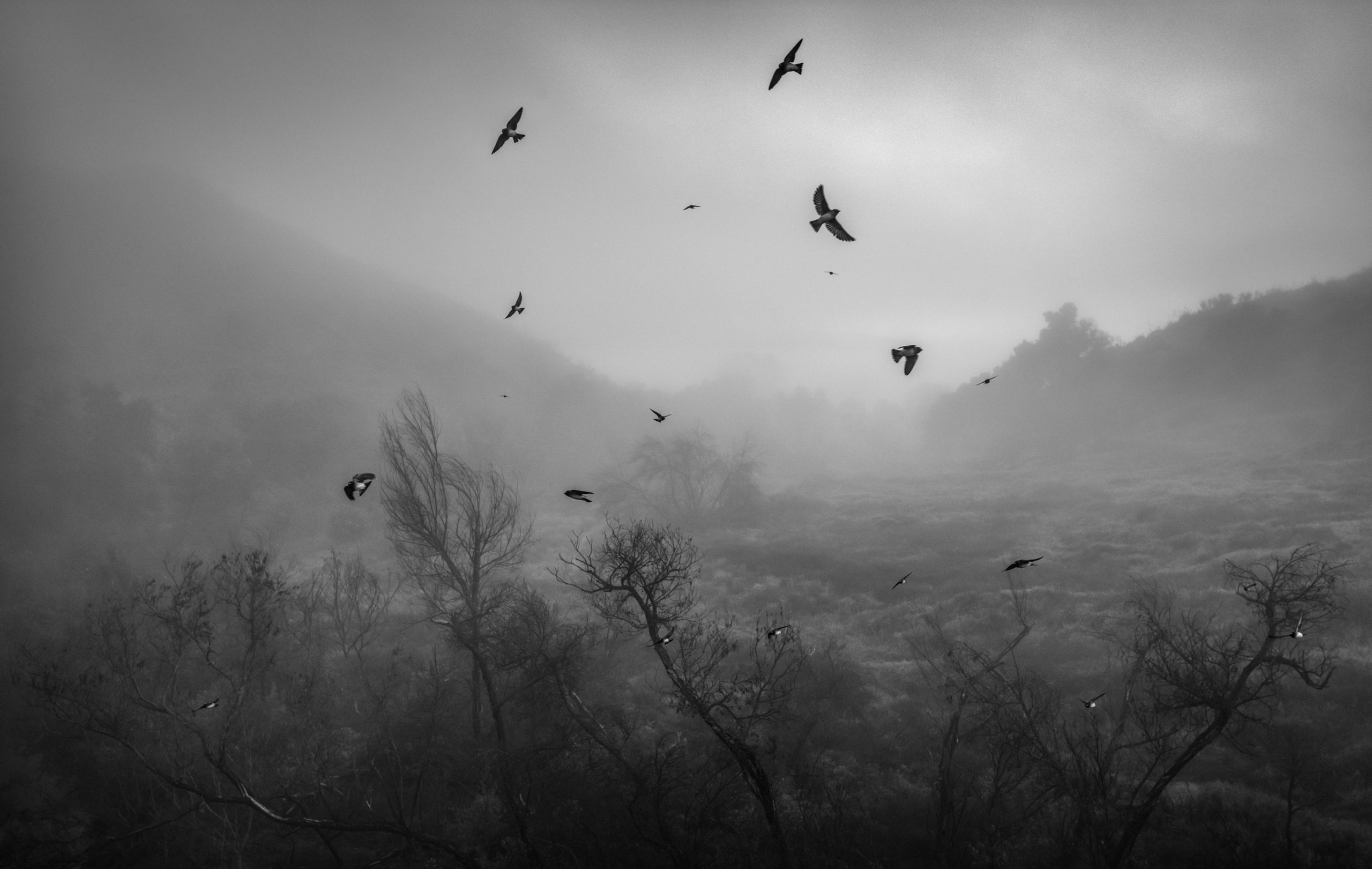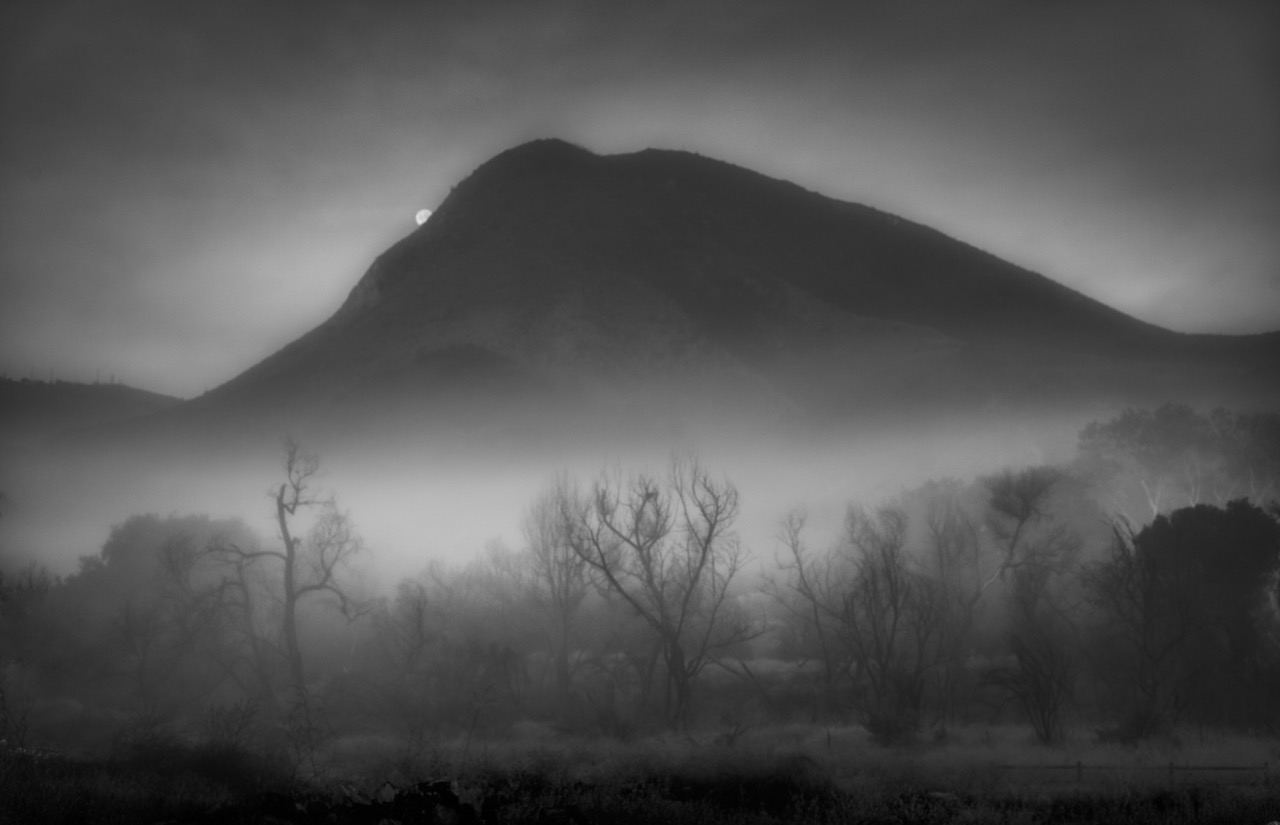 By Colter Ruland
By Colter Ruland
Charlie Lieberman is a photographer and cinematographer based in Southern California, whose work asks us to reconsider the preconceptions we might have about landscapes and how we move through them. Throughout the pandemic, sequestered in his home, Lieberman has been photographing a series of work inspired by the surrounding landscapes within walking distance that were once decimated by the Woolsey Fire and now find new symbolism. I asked him about this, his work, and what he thinks art can do for us in order to heal.
The COVID-19 outbreak is on everyone’s minds. What role do you think you have as an artist when everyone seems to be panicking about events beyond our control?
My role is twofold.
First, looking outward during this uniquely trying time, bringing some sweetness and warmth into friends’, acquaintances’ and strangers’ lives has been very fulfilling. My goal is to show that the natural world is still rife with miracles. I have to drown out the paranoia of this catastrophe, then move on and seek the sublime. The responses of gratitude to my sharing of these pictures has been very rewarding.
Second, looking inward, being able to keep making images keeps my life filled with purpose. The dissemination of these photographs has become my job for now. I feel I’m holding something special together for the people I reach. I feel my voice as an image maker and my choice of subject has helped others cope.
 Has the outbreak presented any specific challenges for you and your work? If so, what are they and what can be done to create art in a time such as this?
Has the outbreak presented any specific challenges for you and your work? If so, what are they and what can be done to create art in a time such as this?
Yes. The biggest challenge is that my photographic world has become geographically miniscule. Normally, I would be traveling around the American West and, quite often, overseas as well. When the shelter-at-home rules went into effect, early on, I had to limit my subject to areas within walking distance. Lately, I’ve expanded it slightly, driving to slightly more distant locations. To get the best light, I’ve needed to get up very early, often well before dawn. Checking the weather reports, sunrise and sunset times, paying attention to the position of the stars have all been used to give me the best chances for photographic success. Since Southern California is well known for not having any “weather,” I have to make the most of the minimal opportunities that arise. There’s an urgency to be out there every minute when there is something going on in the atmosphere.
During times of national emergency, some might wonder about the relevancy of art in their lives. What do you think that role should be?
Bringing some normalcy to light is very important. This too shall pass and we need to keep our wits, our culture and our values intact. It may be harder to be heard as an artist during this major distraction, but when we come out the other end, we want our world to still have the habit of finding value in these voices, as it has done since the time of cave paintings.
While in self-isolation, you’ve been taking walks around areas burned by the Woolsey Fire. What are you feeling when you take photographs of these landscapes, especially now.
I feel that the Woolsey Fire and COVID-19, each in its own way a catastrophe, are linked. We are now 18 months past Woolsey and seeing nature recover is a lesson in healing. Keeping ourselves together and strong after Woolsey was an example of what needs to be done on a much larger scale with this virus.
 Also, all over the world, many people are noticing the skies have been clearing, the wildlife has been returning, the birds are singing louder and the earth is showing signs of a recovery that is happening faster than anyone had predicted. Perhaps the message is for the people of the earth to slow down and take a closer look at the speed we’ve been hurtling towards another, greater existential problem. This may be the canary in the coal mine moment, if we take the time to notice.
Also, all over the world, many people are noticing the skies have been clearing, the wildlife has been returning, the birds are singing louder and the earth is showing signs of a recovery that is happening faster than anyone had predicted. Perhaps the message is for the people of the earth to slow down and take a closer look at the speed we’ve been hurtling towards another, greater existential problem. This may be the canary in the coal mine moment, if we take the time to notice.
Do you think photography has a role in documenting the times we live in?
Yes, art through all of time has had a role in making statements about the world around us. As long as there are artists, there will be a record of life from personal viewpoints unlike those from politicians, media outlets or the majority of educational curricula. I am so in awe of artists that I am intimidated to call myself one. I was raised not to brag, so I find it difficult to give myself that title. It is for others to decide.
For more, visit his website here and be sure to follow him on Instagram @cl_asc
